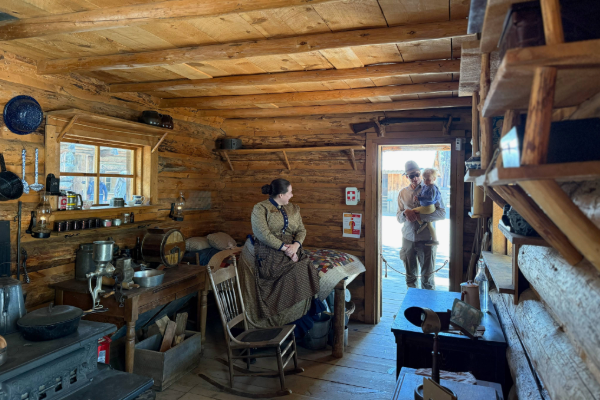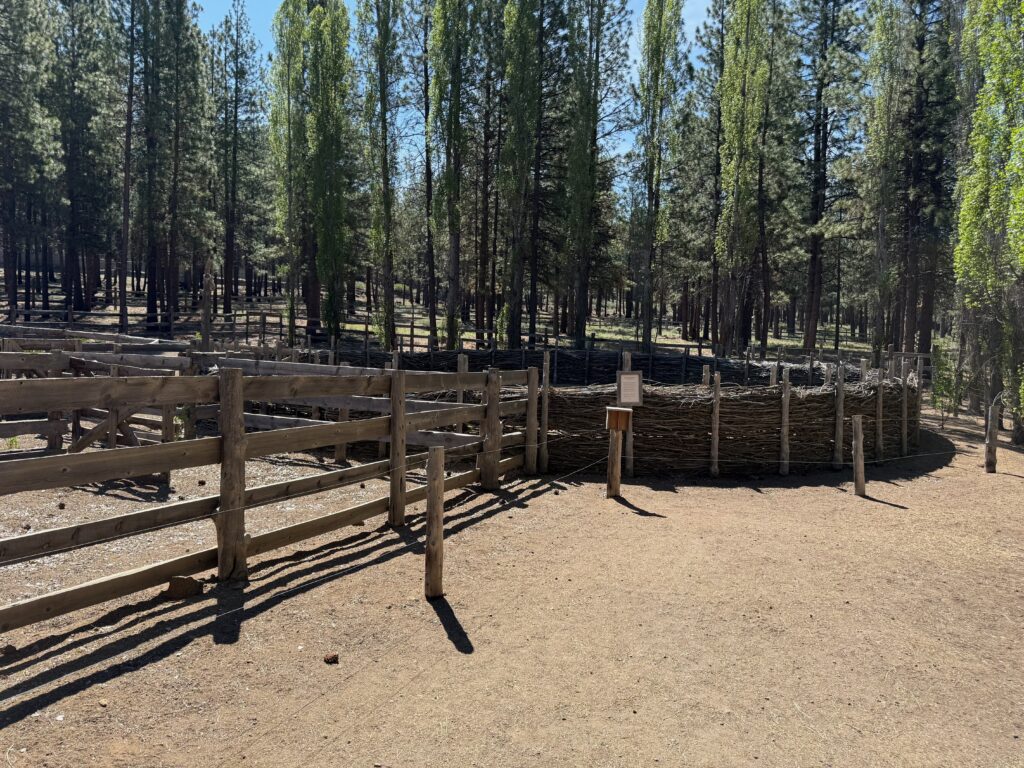High Desert Ranch
The history of High Desert homesteaders comes to life at the High Desert Ranch.
The High Desert Ranch tells the story of a fictional family of homesteaders who claimed a piece of Central Oregon. Ranch families work hard maintaining a cabin, barn, corral, bunkhouse, root cellar and sawmill, caring for the animals and tending cattle on the open range.
When they arrived in 1882, what would become the town of Bend was little more than a few families residing along the Deschutes River. The railroad was a few years off as well, arriving in 1911. The Ranch highlights the challenges residents faced as they sought to build a new life in the harsh, dry climate of the High Desert.
The fictional story of the residents is representative of the many families who moved into the West in the mid-1800s with the encouragement and support of the United States government as a means of bolstering the nation’s territorial claim. In the decades prior, individual surveyors, trappers and missionaries had begun to arrive and move onto Indigenous land. The United States government, eager to claim this region officially for its citizens, pressured Native people into signing treaties that would force them to live in designated areas much smaller than their vast homelands. Some Native people refused to sign these treaties; the United States responded with violence. Others negotiated for rights, such as the right to hunt, fish and gather roots and berries at the places where they had always gone – treaty rights that Native people continue to exercise today.
Homesteading in Oregon: “Manifest Destiny” and Settler Colonialism
“We came … to take and settle the country exclusively for ourselves.” – Peter Burnett, a white settler who served in the Oregon Territorial Legislature and later became the first governor of California, 1843
Oregon’s territorial and then state government sought to ensure that this land, recently taken from Indigenous people, would be available exclusively to white settlers. The Oregon Constitution, adopted in 1857, banned slavery and made it illegal for African Americans to live in the state. The exclusion acts were rarely enforced, and a few African Americans did settle in Oregon despite the message that they were not welcome.


Vaqueros and the Willow Corral
At the ranch, you’ll have the chance to see a High Desert willow corral.
During the late 1800s, ranchers and cattle operations moved into the High Desert. They came north from California, which had a history of Spanish colonial settlements that employed Mexican cowboys (called vaqueros in Spanish) to work the range. As vaqueros trained Anglo-Americans, they passed on Mexican traditions of riding and roping. Over time, terms such as vaquero became Anglicized and evolved into buckaroo.
Ranching became one of the largest industries in the region and remains an important part of the High Desert culture and economy.

Heirloom Chickens
Among the free-roaming chickens and turkeys at the High Desert Ranch are two Faverolles hens.
The Faverolles chickens are a heritage breed well-suited to cold and low-light climates. In 1904, Faverolles won numerous recommendations at the St. Louis World’s Fair and were advertised in national magazines. The breed’s distinctive feathered feet, beards and fluffy plumage ensure that they are rarely cold and continue to lay in the winter.
